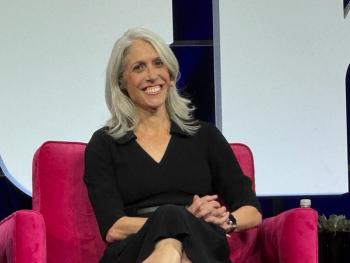
Hospital CEOs see no choice but to change
At Sanford Health’s summit on rural health care, the leaders of four health systems talk about the need for new solutions to care for patients.
Hospitals and health systems can’t rely on traditional strategies any longer.
Four health system executives all made the case for innovation, forging partnerships, and embracing technology to expand access to care in a challenging time. They talked about the need to employ new approaches during a panel discussion at Sanford Health’s summit on rural health care Tuesday.
“If we're not uncomfortable, we're generally not going to change, or we're not going to do it very quickly,” Gassen said. “And I think one of the advantages that we have right now is that because of the situation that we're in in this country, we don't have a choice but to change and to be able to innovate.”
“We've got to figure out a way to sometimes, what I refer to as decannibalize, what we're doing so that we can rationalize the system and really protect what we've all committed ourselves to,” Wexler said.
Providence has been struggling financially since the COVID-19 pandemic, and has had staff reductions in recent months.
“We have come to the conclusion that we've got to move to a space of sustainability where we're not clawing our way back every year,” Wexler said. “How do we get on the other side, so that we can invest and serve more of those who are in need?’
While he said that may mean service reductions in some areas, Wexler said the system won’t create health care deserts.
“That requires us to be steadfast in places where, if you close something down, people don't have care,” he said. “That's a red line.”
“Dartmouth is actually a clinic model in an area of the country where we don't have a lot of competition, so we like to own everything,” Conroy said. “But we realize that we have to diversify our portfolio, and we've started doing things like being very good at the pharmacy business, or expanding into understanding home care and home-based care.”
Conroy discussed Dartmouth’s entry into the telepharmacy space, with a team that assists hospitals when they don’t have pharmacists on duty.
“We offer telepharmacy services across the country, so we realize there's some things that we can actually get out of our comfort zone and out of our primary service area, and other things that we're going to need partners. And I think that's unusual for health systems,” Conroy said.
Andrea Walsh, president and CEO of HealthPartners in Minnesota, said collaboration has been critical for her system.
“We found it an absolute necessity to figure out partnership,” Walsh said.
HealthPartners teamed up with five smaller hospital systems in Wisconsin to establish the Western Wisconsin Cancer Center, based at the Westfields Hospital & Clinic.
“We don't want our patients to have to drive to get access to specialty care, and in oncology in particular, we found ourselves located in a region where you didn't have access to oncology services,” Walsh said.
The four health system leaders all emphasized the need to embrace technology, and they pointed to telehealth in particular as a critical tool in offering more services while reducing hassles for patients.
“I think one of our major challenges is actually embedding telehealth in everything we do,” Conroy said.
Walsh also stressed the value of telehealth and the need for health systems to be open to exploring different strategies.
“Embracing technology more fully, and embracing new models, new business models that help us with workforce development, that help us focus as much on health and healing as we do on care, is going to be key to the future, particularly in our rural communities,” she said.
Even with the headwinds facing rural hospital systems, Gassen said he’s optimistic about the possibilities of coming up with new strategies, which could offer a roadmap to hospitals across the country.
“I think we have an opportunity with rural hospitals to be able to lead the way and start to innovate, and to step out and say that we're willing to make changes instead of having change made to us,” Gassen said.
“And if we do that, we have a chance to actually impact things,” he added. “We have a chance to be a part of how we want to incorporate the use of technology into the way in which we deliver care, so that we can advance that care for the patients that we serve. And I think that many of those solutions are going to be portable. They're going to be able to go outside the bounds of just rural communities, and they can be part of solutions for our urban communities as well.”








































